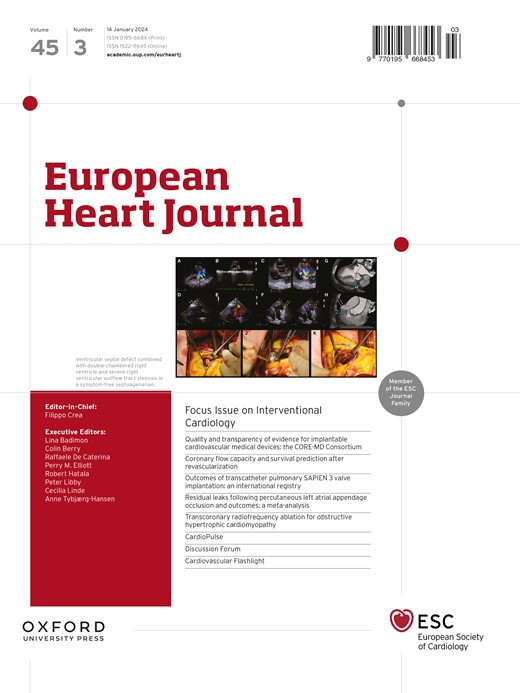A pH-Responsive and MRI-Functional nanomedicine enabling targeted delivery of simvastatin in atherosclerosis
IF 37.6
1区 医学
Q1 CARDIAC & CARDIOVASCULAR SYSTEMS
引用次数: 0
Abstract
Abstract Background Simvastatin is commonly used for the treatment of atherosclerosis. However, it causes side effects in some patients and not always effective. Moreover, although its treatment effects are often attributed to its cholesterol-lowering activity, some in vitro studies suggest that simvastatin also exerts antioxidant and anti-inflammatory effects. Purpose To develop an atherosclerotic plaque microenvironment-responsive nanoparticular system to deliver and release Gadolinium (Gd3+) for magnetic resonance imaging (MRI) and simvastatin for treatment within the plaque. Methods A nanoparticle was synthesized with nanoscale coordination polymers (NCPs), a pH-responsive linker, Gd3+, and simvastatin (ST), i.e. a ST/NCP-PEG nanoparticle. The biological effects of ST/NCP-PEG nanoparticle were tested on RAW264.7 macrophages. Four weeks old ApoE-/- mice were fed on high fat diet for 4 weeks and then randomly divided into three groups for a 8-week treatment regime via weekly intravenous administration of: 1) NCP-PEG nanoparticle without ST (control); 2) ST/NCP-PEG nanoparticles; or 3) free ST. Results We have developed a pH-responsive ST/NCP-PEG nanoparticle carrying an MRI contrast agent Gd3+ and a drug molecule ST, with an 80 nm diameter in spherical shape. This nanoparticle collapsed into biodegradable components while releasing both Gd3+ and ST under the atherosclerotic plaque microenvironment with a pH 5.6. ST/NCP-PEG nanoparticles exerted strong anti-oxidant and anti-inflammatory effects in vitro, as determined by an intracellular ROS indicator DCF-DA and expression levels of cytokines (e.g. IL-6, TNF-α and MCP-1), respectively. Upon intravenous administration, ST/NCP-PEG nanoparticles, as demonstrated by IVIS imaging system, accumulated specifically in the plaques in a time-dependent manner, reaching the peak concentration at 24 hours post administration. The plaques were readily visualized by MR imaging (T1-weighted signal) due to the enrichment of Gd3+. After 8 weeks treatment, compared to the empty NCP-PEG nanoparticle, treatment with ST/NCP-PEG and free ST reduced plaque lesion size by 55% (p<0.001) and 29% (p<0.05), respectively. Moreover, ST/NCP-PEG nanoparticles showed a larger reduction in plaque lesions than free ST (p<0.05). Oil red O staining of both the whole aorta and the aortic roots generated similar results in terms of plaque lesion changes. Mechanistically, both ST/NCP-PEG and free ST reduced ROS production and increased the ratios of M2/M1 macrophages within the plaque, with ST/NCP-PEG nanoparticle treatment exerted larger therapeutic effects. Moreover, long-term treatment with ST/NCP-PEG nanoparticles did not show obvious toxicity in all major organs. Conclusions An atherosclerotic plaque microenvironment-responsive MR imaging functional nanoparticle for targeted delivery of ST to the plaque could diagnose atherosclerotic plaque and improve treatment efficacy of ST.一种ph响应和mri功能纳米药物,可在动脉粥样硬化中靶向递送辛伐他汀
背景辛伐他汀常用于动脉粥样硬化的治疗。然而,它会对一些病人产生副作用,而且并不总是有效。此外,尽管辛伐他汀的治疗效果通常归因于其降低胆固醇的活性,但一些体外研究表明,辛伐他汀也具有抗氧化和抗炎作用。目的:开发一种对动脉粥样硬化斑块微环境敏感的纳米颗粒系统,在斑块内递送和释放用于磁共振成像(MRI)的钆(Gd3+)和用于治疗的辛伐他汀。方法以纳米配位聚合物(ncp)、ph响应连接剂、Gd3+、辛伐他汀(ST)为原料合成ST/NCP-PEG纳米颗粒。研究ST/NCP-PEG纳米颗粒对RAW264.7巨噬细胞的生物学效应。4周龄ApoE-/-小鼠先饲喂高脂饲料4周,然后随机分为3组,每周静脉给药8周:1)不含ST的NCP-PEG纳米颗粒(对照组);2) ST/NCP-PEG纳米颗粒;结果制备了一种ph响应的ST/NCP-PEG纳米颗粒,其直径为80 nm,呈球形,携带MRI造影剂Gd3+和药物分子ST。该纳米颗粒在pH为5.6的动脉粥样硬化斑块微环境下分解成可生物降解的组分,同时释放Gd3+和ST。通过细胞内ROS指标DCF-DA和细胞因子(如IL-6、TNF-α和MCP-1)的表达水平,ST/NCP-PEG纳米颗粒在体外具有较强的抗氧化和抗炎作用。IVIS成像系统显示,经静脉给药后,ST/NCP-PEG纳米颗粒以时间依赖性的方式特异性地积聚在斑块中,在给药后24小时达到峰值浓度。由于Gd3+的富集,斑块很容易通过MR成像(t1加权信号)显示出来。治疗8周后,与空的NCP-PEG纳米颗粒相比,ST/NCP-PEG和游离ST治疗分别使斑块斑块大小减少了55% (p<0.001)和29% (p<0.05)。此外,ST/NCP-PEG纳米颗粒比游离ST更能减少斑块病变(p<0.05)。全主动脉和主动脉根部油红O染色在斑块病变改变方面的结果相似。在机制上,ST/NCP-PEG和游离ST均能减少ROS的产生,增加斑块内M2/M1巨噬细胞的比例,ST/NCP-PEG纳米颗粒处理具有更大的治疗效果。此外,长期使用ST/NCP-PEG纳米颗粒治疗在所有主要器官中均未显示出明显的毒性。结论应用微环境响应型磁共振成像功能纳米颗粒靶向给药ST可有效诊断动脉粥样硬化斑块,提高ST的治疗效果。
本文章由计算机程序翻译,如有差异,请以英文原文为准。
求助全文
约1分钟内获得全文
求助全文
来源期刊

European Heart Journal
医学-心血管系统
CiteScore
39.30
自引率
6.90%
发文量
3942
审稿时长
1 months
期刊介绍:
The European Heart Journal is a renowned international journal that focuses on cardiovascular medicine. It is published weekly and is the official journal of the European Society of Cardiology. This peer-reviewed journal is committed to publishing high-quality clinical and scientific material pertaining to all aspects of cardiovascular medicine. It covers a diverse range of topics including research findings, technical evaluations, and reviews. Moreover, the journal serves as a platform for the exchange of information and discussions on various aspects of cardiovascular medicine, including educational matters.
In addition to original papers on cardiovascular medicine and surgery, the European Heart Journal also presents reviews, clinical perspectives, ESC Guidelines, and editorial articles that highlight recent advancements in cardiology. Additionally, the journal actively encourages readers to share their thoughts and opinions through correspondence.
 求助内容:
求助内容: 应助结果提醒方式:
应助结果提醒方式:


